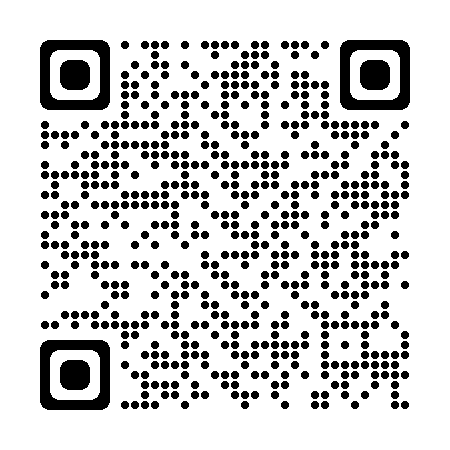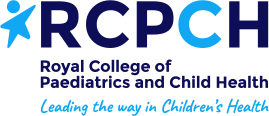Asthma attack (asthma suddenly gets worse)
If your child’s asthma suddenly gets worse, they will require urgent treatment. Signs of an asthma attack include:
- Sounding very wheezy
- Having a tight chest
- Finding it hard to breath
- Being too breathless to walk or talk.
Sometimes there is no obvious cause for your child’s asthma attack. The most common triggers are viral infections (coughs, colds and chest infections), emotional anxiety and exposure to airway irritants such as cigarette smoke.
What should I do if my child is having an asthma attack?
- Sit your child upright
- Keep them calm and reassure them
- Refer to your child's asthma paln and follow the instuctions
For more information on how to beat asthma please visit the Beat Asthma website 
If your child has any of the following:
- Not improving despite using their inhaler according to their action plan
- Breathing very fast, too breathless to talk, eat or drink
- Working hard to breathe, drawing in of the muscles below the rib, or noisy breathing (grunting)
-
Breathing that stops or pauses
-
A harsh noise as they breathe in (stridor) present all of the time (even when they are not upset)
- Is pale, blue, mottled or feels unusually cold to touch
- usually cold to touch
- Difficult to wake up, very sleepy or confused
- Has a fit (seizure)
- Has a rash that does not go away with pressure (the 'Glass Test')
Ring 999 immediately for help. Give 10 puffs of blue (salbutamol) reliever inhaler every 10 minutes until ambulance arrives.
Keep child in upright position and reassure them.
If your child has any of the following:
- They need increased doses of their inhaler for more than 2-3 days
- Breathing a bit faster than normal or working a bit harder to breathe
-
A harsh noise as they breathe in (stridor) only when upset
-
Dry skin, lips, tongue
- Not had a wee in last 8 hours
- Sleepy or not responding normally
- A temperature less than 36oC in those over 3 months
- Getting worse or you are worried about them
You need to contact a doctor or nurse today.
Please ring your GP surgery or NHS 111 – dial 111
Continue to follow your child’s action plan while seeking advice.
If symptoms persist for 4 hours or more and you have not been able to speak to either a member of staff from your GP practice or to NHS 111 staff, recheck that your child has not developed any red features
If none of the above features are present
Watch them closely for any change and look out for any red or amber symptoms
Continue to follow your child’s action plan while seeking advice
If your child has other symptoms associated with their asthma attack, you might want to look at our information on sore throat, cough, earache, diarrhoea and vomiting or tummy ache or our other pathways.
Self Care
Carry on looking after your baby or child at home. If you are still worried about your child , ring NHS 111 or visit 111.nhs.uk
This guidance has been reviewed and adapted by healthcare professionals across North East and North Cumbria with consent from the Hampshire development groups.
Asthma attack prevention
The most common triggers are viral infections, emotional disturbance and exposure to airway irritants such as cigarette smoke.
Things you can do to reduce the chance of your child having an asthma attack:
1. Get your child’s asthma under control
Children with poorly controlled asthma are much more likely to have an asthma attack. Make sure your child follows their action plan.
Signs of poorly controlled asthma:
- Needing additional doses of inhaler 3 or more times a week
- Wheezy after exercise
- Persistent night-time cough
If your child has symptoms of poorly controlled asthma they should be reviewed. Make an appointment with their GP or asthma nurse.
It is important to have a yearly asthma review with your asthma nurse or GP. Everyone with asthma should have an action plan.
2. Get the inhaler technique right
Watch these Beat Asthma videos on how to help your child use their inhaler.
Your child’s asthma will not be controlled if their medicines are not getting into their lungs.
If your child has been given a spacer:
- Check the inhaler contains medicine and shake. Reliever inhalers have a maximum of 200 doses but will continue to fire when empty.
- Remove the cap.
- Fit the inhaler into the end of the spacer.
- For spacer with mask, place the mask over the nose and mouth and ensure a good seal. For spacer and mouthpiece, place teeth around the mouthpiece and seal with lips. Most children over 3 years can use a mouthpiece.
- Press the inhaler once and encourage the child to take 5 slow breaths or count to 10 slowly whilst they breath normally through the spacer.
- Shake the inhaler and repeat steps 4 and 5 if more puffs are needed.
See your practice nurse or doctor if you are not sure whether your child is using their inhaler properly.
3. Avoid triggers where possible
Even when adults smoke away from their children, smoke on their clothes and hair can make their child’s asthma worse.
If needed visit the your local stop smoking site.
4. Your child should have an influenza immunisation every autumn (the flu jab)
Flu viruses can trigger asthma symptoms. Current guidelines in the UK recommend that high-risk groups such as people with severe asthma should have a flu jab each winter.
Where should you seek help?
- If it is non-urgent, speak to your local pharmacist or health visitor.
- If your child has any of the above features, urgently see your GP. For an urgent out-of-hours GP appointment, call NHS 111.
- You should only call 999 or go your nearest A&E department in critical or life threatening situations.
Where should you seek help?
- If it is non-urgent, speak to your local pharmacist or health visitor.
- If your child has any of the above features, urgently see your GP. For an urgent out-of-hours GP appointment, call NHS 111.
- You should only call 999 or go to your nearest A&E department in critical or life threatening situations.
Pharmacists are experts in many aspects of healthcare and can offer advice on a wide range of long-term conditions and common illnesses such as coughs, colds and stomach upsets. You don’t need an appointment and many have private consultation areas, so they are a good first port of call. Your pharmacist will say if you need further medical attention.
Sound advice
- Visit a pharmacy if your child is ill, but does not need to see a GP.
- Remember that if your child's condition gets worse, you should seek further medical advice immediately.
- Help your child to understand - watch this video with them about going to the pharmacy.
For information on common childhood illnesses go to What is wrong with my child?
Pharmacists are experts in many aspects of healthcare and can offer advice on a wide range of long-term conditions and common illnesses such as coughs, colds and stomach upsets. You don’t need an appointment and many have private consultation areas, so they are a good first port of call. Your pharmacist will say if you need further medical attention.
Sound advice
- Visit a pharmacy if your child is ill, but does not need to see a GP.
- Remember that if your child's condition gets worse, you should seek further medical advice immediately.
- Help your child to understand - watch this video with them about going to the pharmacy.
For information on common childhood illnesses go to What is wrong with my child?
Health visitors are nurses or midwives who are passionate about promoting healthy lifestyles and preventing illness through the delivery of the Healthy Child Programme. They work with you through your pregnancy up until your child is ready to start school.
Health Visitors can also make referrals for you to other health professionals for example hearing or vision concerns or to the Community Paediatricians or to the child and adolescent mental health services.
Contact them by phoning your Health Visitor Team or local Children’s Centre.
Sound advice
Health visitors also provide advice, support and guidance in caring for your child, including:
- Breastfeeding, weaning and healthy eating
- Exercise, hygiene and safety
- Your child’s growth and development
- Emotional health and wellbeing, including postnatal depression
- Safety in the home
- Stopping smoking
- Contraception and sexual health
- Sleep and behaviour management (including temper tantrums!)
- Toilet training
- Minor illnesses
For more information watch the video: What does a health visitor do?
Health visitors are nurses or midwives who are passionate about promoting healthy lifestyles and preventing illness through the delivery of the Healthy Child Programme. They work with you through your pregnancy up until your child is ready to start school.
Health Visitors can also make referrals for you to other health professionals for example hearing or vision concerns or to the Community Paediatricians or to the child and adolescent mental health services.
Contact them by phoning your Health Visitor Team or local Children’s Centre.
Sound advice
Health visitors also provide advice, support and guidance in caring for your child, including:
- Breastfeeding, weaning and healthy eating
- Exercise, hygiene and safety
- Your child’s growth and development
- Emotional health and wellbeing, including postnatal depression
- Safety in the home
- Stopping smoking
- Contraception and sexual health
- Sleep and behaviour management (including temper tantrums!)
- Toilet training
- Minor illnesses
For more information watch the video: What does a health visitor do?
Midwives provide advice, care and support for women and their babies during pregnancy, labour and the early postnatal period. They provide health education and parenting advice until care is transferred to a health visitor. This usually happens when your baby is about 2 weeks old.
Sound Advice
A midwife is an expert in normal pregnancy and birth.
Midwives provide advice, care and support for women and their babies during pregnancy, labour and the early postnatal period. They provide health education and parenting advice until care is transferred to a health visitor. This usually happens when your baby is about 2 weeks old.
Sound Advice
A midwife is an expert in normal pregnancy and birth.
GPs assess, treat and manage a whole range of health problems. They also provide health education, give vaccinations and carry out simple surgical procedures. Your GP will arrange a referral to a hospital specialist should you need it.
Sound advice
You have a choice of service:
- Doctors/GPs can treat many illnesses that do not warrant a visit to A&E.
- Help your child to understand – watch this video with them about visiting the GP or going to a walk in centre
For information on common childhood illnesses go to What is wrong with my child?
GPs assess, treat and manage a whole range of health problems. They also provide health education, give vaccinations and carry out simple surgical procedures. Your GP will arrange a referral to a hospital specialist should you need it.
Sound advice
You have a choice of service:
- Doctors/GPs can treat many illnesses that do not warrant a visit to A&E.
- Help your child to understand – watch this video with them about visiting the GP or going to a walk in centre
For information on common childhood illnesses go to What is wrong with my child?
If you’re not sure which NHS service you need, call 111. An adviser will ask you questions to assess your symptoms and then give you the advice you need, or direct you straightaway to the best service for you in your area.
Sound advice
Use NHS 111 if you are unsure what to do next, have any questions about a condition or treatment or require information about local health services.
For information on common childhood illnesses go to What is wrong with my child?
If you’re not sure which NHS service you need, call 111. An adviser will ask you questions to assess your symptoms and then give you the advice you need, or direct you straightaway to the best service for you in your area.
Sound advice
Use NHS 111 if you are unsure what to do next, have any questions about a condition or treatment or require information about local health services.
For information on common childhood illnesses go to What is wrong with my child?
A&E departments provide vital care for life-threatening emergencies, such as loss of consciousness, suspected heart attacks, breathing difficulties, or severe bleeding that cannot be stopped. If you’re not sure it’s an emergency, call 111 for advice.
Sound advice
A&E departments provide vital care for life-threatening emergencies, such as loss of consciousness, suspected heart attacks, breathing difficulties, or severe bleeding that cannot be stopped. If you’re not sure it’s an emergency, call 111 for advice.
Sound advice
School nurses care for children and young people, aged 5-19, and their families, to ensure their health needs are supported within their school and community. They work closely with education staff and other agencies to support parents, carers and the children and young people, with physical and/or emotional health needs.
Contacting the School Nurse
Primary and secondary schools have an allocated school nurse – telephone your child’s school to ask for the contact details of your named school nurse.
There is also a specialist nurse who works with families who choose to educate their children at home.
Sound Advice
Before your child starts school your health visitor will meet with the school nursing team to transfer their care to the school nursing service. The school nursing team consists of a school nursing lead, specialist public health practitioners and school health staff nurses.
They all have a role in preventing disease and promoting health and wellbeing, by:-
- encouraging healthier lifestyles
- offering immunisations
- giving information, advice and support to children, young people and their families
- supporting children with complex health needs
Each member of the team has links with many other professionals who also work with children including community paediatricians, child and adolescent mental health teams, health visitors and speech and language therapists. The school health nursing service also forms part of the multi-agency services for children, young people and families where there are child protection or safeguarding issues.
School nurses care for children and young people, aged 5-19, and their families, to ensure their health needs are supported within their school and community. They work closely with education staff and other agencies to support parents, carers and the children and young people, with physical and/or emotional health needs.
Contacting the School Nurse
Primary and secondary schools have an allocated school nurse – telephone your child’s school to ask for the contact details of your named school nurse.
There is also a specialist nurse who works with families who choose to educate their children at home.
Sound Advice
Before your child starts school your health visitor will meet with the school nursing team to transfer their care to the school nursing service. The school nursing team consists of a school nursing lead, specialist public health practitioners and school health staff nurses.
They all have a role in preventing disease and promoting health and wellbeing, by:-
- encouraging healthier lifestyles
- offering immunisations
- giving information, advice and support to children, young people and their families
- supporting children with complex health needs
Each member of the team has links with many other professionals who also work with children including community paediatricians, child and adolescent mental health teams, health visitors and speech and language therapists. The school health nursing service also forms part of the multi-agency services for children, young people and families where there are child protection or safeguarding issues.



